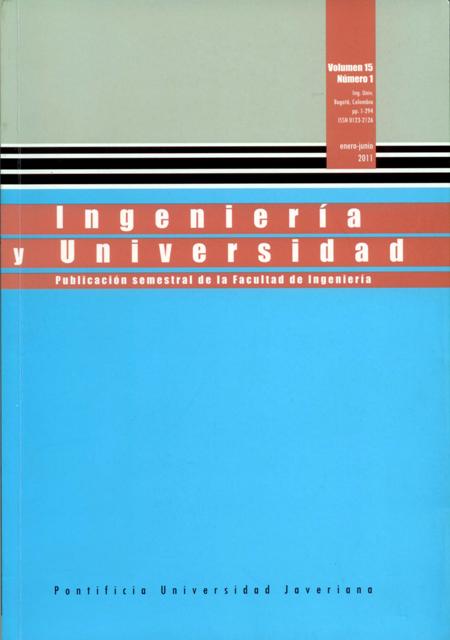Abstract
Simulations of combustion furnaces equipped with radiant burners are usually done assuming the presence of fully developed burning gases in the burners’ outlet. This assumption minimizes the computational cost of simulating hundreds of burners. However, it involves simulating a furnace where the development of combustion reactions is not taken into account, and the interaction of the geometry of the burners with the flow and temperature profiles inside the firebox is not considered. This work seeks to support the above simplification by comparing its impact to a methodology that gets closer to the actual operation of a furnace with hundreds of burners and makes it posible to model the combustion process. Results show that the simulations differ in wall temperatures, the power that reaches the load and the efficiency of firebox in: 1 K, 0.07 MW, and 0.3%.
LAN, X.; GAO, J.; XU, C. y ZHANG, H. Numerical simulation of transfer and reaction processes in ethylene furnaces. Chemical Engineering Research and Design. 2007, vol. 85, núm. A12, pp. 1565-1579.
MAGNUSSEN, B. On the structure of turbulence and a generalized eddy dissipation concept for chemical reaction in turbulent flow. Nineteeth AIAA Meeting. St. Louis, 1981, pp. 1-7.
MODEST, M. Radiative heat transfer. 2a ed. Upper Sadle River, N.J.: Prentice Hall, 2003.
PATANKAR, S. Numerical heat transfer and fluid flow. Washington: Hemisphere, 1980.
SAZHIN, S.; SAZHINA, E.; FALTSI-SARAVELOU, O. y WILD, P. The P-1 model for thermal radiation transfer: advantages and limitations. Fuel. 1996, vol. 75, núm. 3, pp. 289-294.
SPALDING, D. Development of the eddy-break-up model of turbulent combustion. The Combustion Institute. 16th Symposium (International) on Combustion, 1976.
SPALDING, D. Mixing and chemical reaction in steady confined turbulent flames. The Combustion Institute. Thirteenth Symposium (International) on Combustion, Pittsburgh, 1971.
STEFANIDIS, G.; MERCI, B.; HEYNDERICKX, G. y MARIN, G. CFD simulations of steam cracking furnaces using detailed combustion mechanisms. Computers and Chemical Engineering. 2006, vol. 30, núm. 4, pp. 635-649.
STEFANIDIS, G.; VAN GEEM, K.; HEYNDERICKX, G.; MARIN, G. Evaluation of highemissivity coatings in steam cracking furnaces using a non-grey gas radiation model. Chemical Engineering Journal. 2008, núm. 137, pp. 411-421.
VAN LEER, B. Towards the ultimate conservative difference scheme. V. A second order sequel to godunov’s method. Journal of Computational Physics. 1979, núm. 32, pp. 101-136.
WESTBROOK, C. y DRYER, F. Simplified reaction mechanisms for the oxidation of hydrocarbon fuels in flames. Combustion Science and Technology. 1981, vol. 27, núms. 1-2, pp. 31-43.
YEOH, G. y YUEN, K. Computational fluids dynamics in fire engineering. Theory, modelling and practice. s. l.: Elsevier, 2009.
This journal is registered under a Creative Commons Attribution 4.0 International Public License. Thus, this work may be reproduced, distributed, and publicly shared in digital format, as long as the names of the authors and Pontificia Universidad Javeriana are acknowledged. Others are allowed to quote, adapt, transform, auto-archive, republish, and create based on this material, for any purpose (even commercial ones), provided the authorship is duly acknowledged, a link to the original work is provided, and it is specified if changes have been made. Pontificia Universidad Javeriana does not hold the rights of published works and the authors are solely responsible for the contents of their works; they keep the moral, intellectual, privacy, and publicity rights.
Approving the intervention of the work (review, copy-editing, translation, layout) and the following outreach, are granted through an use license and not through an assignment of rights. This means the journal and Pontificia Universidad Javeriana cannot be held responsible for any ethical malpractice by the authors. As a consequence of the protection granted by the use license, the journal is not required to publish recantations or modify information already published, unless the errata stems from the editorial management process. Publishing contents in this journal does not generate royalties for contributors.


